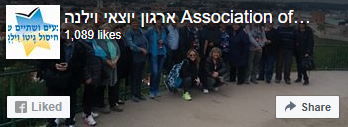Kalman Farber
The book Olkieniki Radin Vilna was written by the late Rabbi Kalman Farber, but was edited and published only after his death by his sons, Chaniel and Shaul Farber.
Rabbi Farber kept a diary while in the Vilna Ghetto. After being rescued from that inferno and immigrating to Israel, he appended to his memoirs chapters about his childhood town of Olkieniki, his time with Rabbi Chaim Ozer Grodzenski at the Ramailes Yeshiva, and his studies at the Radin Yeshiva with the Chafetz Chaim and Rabbi Naftali Trop.
He describes the establishment of the Judenrat in Vilna, life in the ghetto, and his experiences in the labor camps where he was imprisoned. He recounts observing mitzvot while risking his life, celebrating holidays in the camp, and striving as much as possible to avoid performing d’Orayta work (work biblically forbidden by the Torah) while forced to labor on Shabbat.
Farber challenges the common saying that Holocaust martyrs went like sheep to the slaughter, writing:
"The German murderers share the victims' spoils with their Lithuanian murderous brothers; they share the Jewish property taken from those killed in Ponar. This was not enough for them — they abused and humiliated their victims. In Ponar itself, the Lithuanians deceived the victims out of greed for money and did not keep their promises. Of course, this provoked the Jews to seek revenge in the last moment of their lives. Many Lithuanians and Germans were killed, injured, and wounded by Jewish youth, fighting for their lives... Who spread the immense lie that the children of Israel in the ghettos went like sheep to the slaughter? No and no! Heads held high, with pride and dignity, rabbis went to their graves singing 'When Israel went out of Egypt' and reciting 'Hear O Israel,' leaving behind the world of lies." (p. 289).
Here, Farber distinguishes between the physical heroism of young people who fought the Nazis on the verge of execution and the spiritual heroism of rabbis who sang and sanctified God while dying.
The book also recounts a little-known heroic event. When Jews were led to Nemenčinė, they saw by the roadside that local gentiles were digging pits for them. The convoy of Jews, guarded by Germans with rifles and bayonets, signaled to each other that the time had come to act:
"They knew that someone had to start shouting, and in the commotion that would follow, we would flee into the forest. We decided that we would not go like sheep to the slaughter of our own free will. I felt my hourglass running out and said to myself, 'If not now, when.' Amid the shouts and commotion, the circle broke open. Young people, both organized and unorganized, began to shout and run into the forest. Whoever encountered a Lithuanian policeman or an SS did not flee but stabbed him with a knife, beat him with an iron rod he had prepared, or struck him with sticks picked up from the ground. Minutes passed before the police and SS regained control and realized what was happening; in the meantime, the fugitives escaped into the forest as far as possible. The murderers started shooting at us randomly, but we kept running until we felt we were out of danger. In all, about 200 people survived." (pp. 334–335).
The above-mentioned author, may his memory be blessed, devoted his life to preserving the memory of the Holocaust and its lessons. This book, published only after his death, stands as testimony to his life’s work and in memory of the Jews who perished in the Holocaust.

